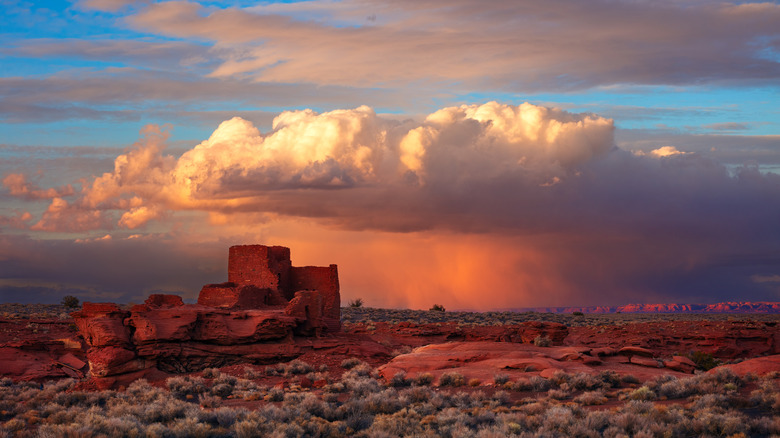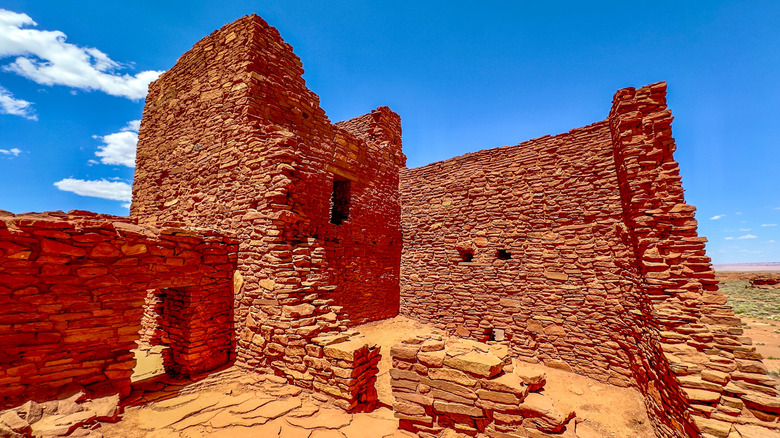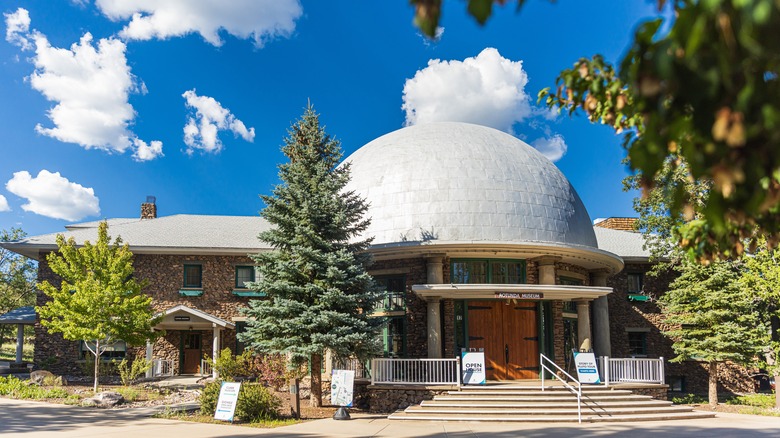Arizona's Historic National Monument Is An Overlooked Marvel An Hour From The Grand Canyon
The Grand Canyon is one of America's most iconic attractions, drawing some 5 million visitors each year who come to marvel at its breathtaking, otherworldly views. While some just elect to take in the canyon from the rim, others strap on their hiking boots and head down into the gorge. Whichever you choose, you can avoid busy crowds at the Grand Canyon by visiting this time of year.
As impressive as the Grand Canyon is, it's not the only show in town. Northern Arizona boasts a number of stellar outdoor destinations, including the vivid landscape of the Painted Desert, the awe-inspiring Petrified Forest National Park, and the Wupatki National Monument — an area rich in Native American archeological sites.
Situated between the Petrified Forest and northern Arizona's ponderosa highlands, the Wupatki National Monument is just an hour's drive from the Grand Canyon, making it the perfect side trip. Not only does it call a stunning desert environment home, but it's also wellspring of history, offering a glimpse into how Indigenous people lived in the area for thousands of years.
Soak up history in gorgeous desert surroundings
Occupying 35,422 acres, the Wupatki National Monument is a collection of pueblo ruins once inhabited by several different native groups over the centuries, including the Hopi, Zuni, Navajo, and Ancestral Pueblo people. Situated at a crossroads, the sites served as vital villages and places of trade and still stand as a testament to both the peoples' hard work and tenacity in such a harsh desert environment.
The national monument and its surroundings are home to a number of prehistoric pueblos. The site's namesake — the Wupatki Pueblo — is also the biggest free-standing pueblo in Arizona, and features 104 rooms, including a ball court and natural blowhole. Constructed out of red stones, the structure rises starkly from the surrounding desert, and even though it's no longer occupied, it's still an important site for the Hopi, who believe the people who lived and died at Wupatki still remain as spiritual guardians.
Other ruins include the Lomaki and Box Canyon Pueblos, which acted as local agricultural centers; the Wukoki Pueblo ,a three-story, eight room structure that offers sweeping vistas of the towering San Francisco Peaks in the distance , and the Nalakilu and the Citadel Pueblos, which — while built in the early 1100s — occupy an area that has evidence of human habitation dating back to 8000 BCE.
Other things to see and do around Wupatki National Monument
While you're in the area, make sure to check out the nearby Sunset Crater Volcano National Monument, which can be accessed via the 34-mile Sunset Crater–Wupatki Scenic Loop Drive. The site of a massive volcanic eruption almost 1,000 years ago, this reserve features over 6.5 miles of hiking trails which take you through rocky remnants of lava flows and ponderosa pines. The Sunset Crater Volcanic National Monument is also an International Dark Sky Park, which makes it an optimal spot for stargazing.
For a more up-close view of the heavens, head to the Lowell Observatory, which sits atop a hill just west of downtown Flagstaff. Built by Percival Lowell at the end of the 17th century, this observatory was where Pluto was first observed in 1930. The observatory is open for tours during the day, and if the weather is nice, visitors can peer through several of the complex's telescopes at night for an unforgettable view of the night sky.
Flagstaff is a great, walkable college town that's the perfect spot to refuel with food, coffee, and drinks. For a greater understanding of the local natural history, swing by the Museum of Northern Arizona, which is treasure trove of Native American archeological relics and art, along with plenty of fossils, including the full skeleton of a Dilophosaurus dinosaur — the museum's crown jewel. For more of Northern Arizona's tranquil desert charms, check out this "Gateway to the North Rim" of the Grand Canyon.


